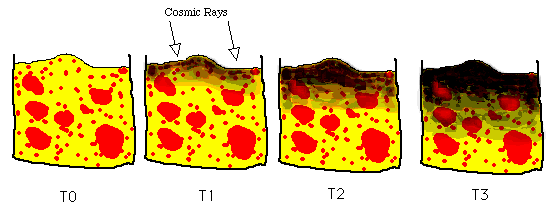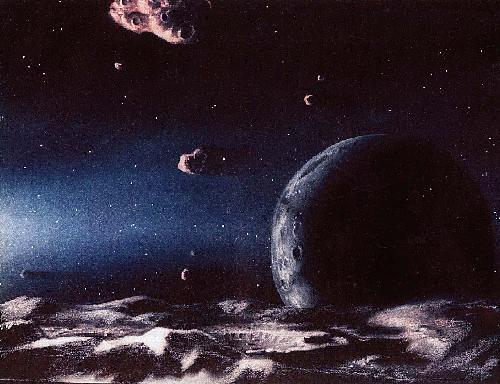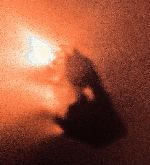
The formation of an irradiation mantle
The cartoon above depicts a cross-section through a piece of a
cometary nucleus and shows the formation of an irradiation mantle.
At initial time T0, the comet nucleus consists of a mixture of
ices (yellow) and rocks (red). At later time T1, cosmic rays
irradiate the nucleus surface and begin to damage molecular bonds
in the icy material. As time increases (step T2) the degree
of damage done by the cosmic rays increases. Laboratory experiments
with particle accelerators show that during irradiation there is
preferential escape of hydrogen and an increase in the chemical
complexity of the irradiated material. Many complex carbon compounds
may be formed, resulting in a surface mantle that is dark (like
charcoal) and neutral to red in color. By the final time step (T3),
the process is saturated. The few x 100 MeV to many GeV cosmic
rays responsible for the most extensive
damage in depth produce the greatest effects to down to a few meters
in ice, so the irradiation layer would be about this thick.
The time difference
T3 - T0 is thought to be about 100 million years.
The irradiation mantle shown here is distinct from the
rubble
mantle caused by outgassing.


